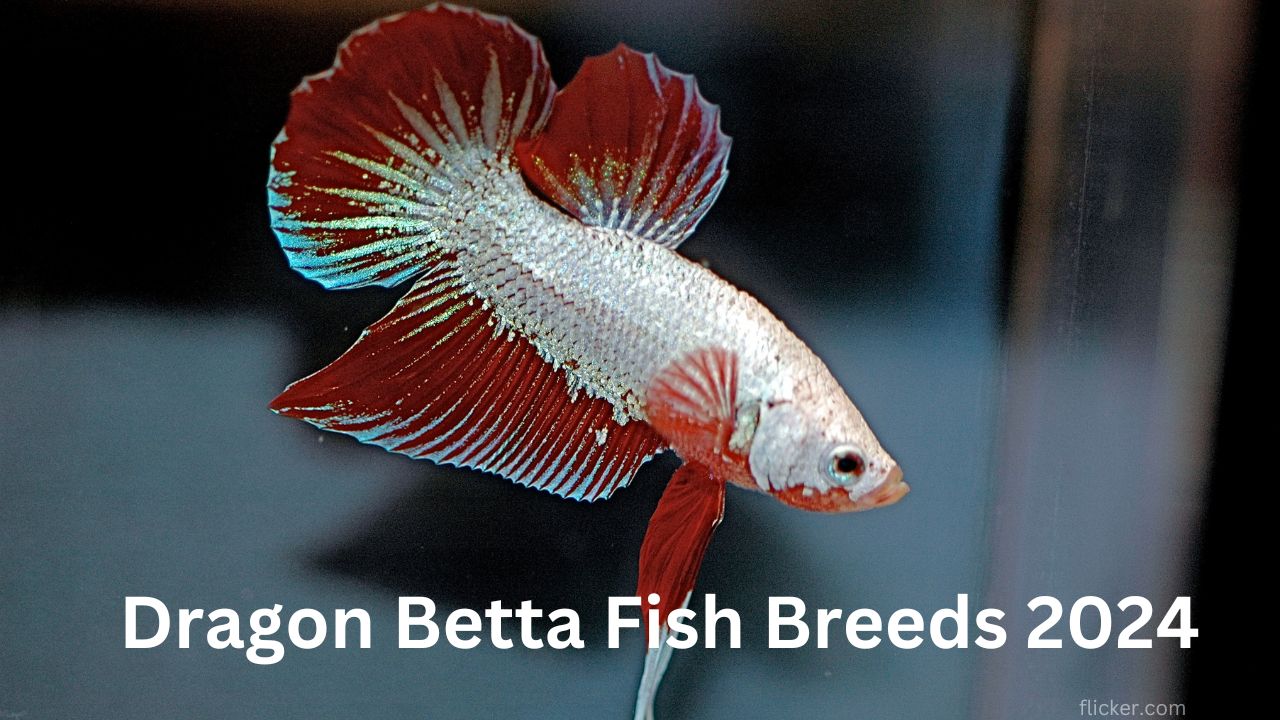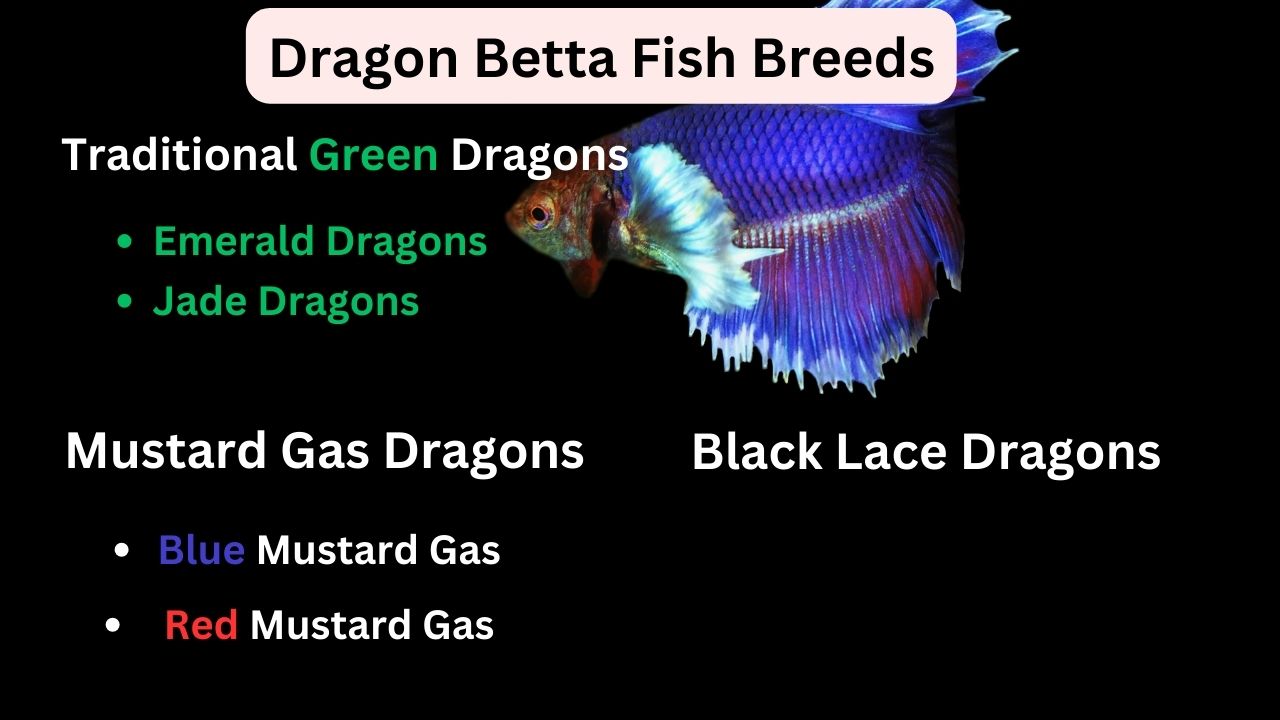Dragon Betta Fish Breeds & Important Factors
In Dragon Betta Fish Breeds, we talk about dragon betta fish breeds, their origin, and history, betta breeding, etc. I’m your friend Carrie, and if you have any suggestions, please let me know.
Overview of Dragon Betta Fish Breeds
Dragon bettas have become hugely popular in recent years. Their unique scalation and vibrant colors make them stand out from traditional betta breeds. As 2024 approaches, dragon bettas are poised to be one of the most sought-after betta breeds on the market.
Origins and History
Dragon bettas originated in Asia and are believed to have first appeared in the 1990s. They are thought to have stemmed from crossbreeding traditional betta species like Betta splendens and Betta embellish. Over years of selective breeding, dragon scales, and vibrant red and green colors began emerging in fry.
The first dragon bettas displayed a green metallic sheen. Breeders worked to enhance the trait, and bettas exhibiting an emerald green shine were highly coveted. Other colors like black, blue, and red dragons emerged later on. Today, there are many color variants of these spectacular fish.
Physical Traits and Appearance
Colors and Scales
Dragon bettas are named after their thick opaque scales that resemble reptilian skin. Instead of the smooth scales seen on traditional bettas, dragon bettas have chunky metallic scales overlaying the entire body. They reflect light to produce a dazzling and intense coloration.
The most popular dragon colors today are greens, blacks, and mustard gas variants. Emerald or jade greens and dark black lace dragons are extremely popular. Mustard gas variants feature a pale body with darker finnage and heads.
Fins and Tail Types
Dragon bettas exhibit the same tail shape variety seen in traditional betta breeds like Halfmoon, crown tail, and plakat. Their chunky metallic scales extend to the fins as well, causing them to sparkle under light. Their vibrant colors against white or red fins make for stunning fish.
Popular Dragon Betta Fish Breeds
Traditional Green Dragons
Emerald Dragons
Emerald-colored dragon bettas have dark green opaque scales. They display a rich shiny green metallic sheen under light. Emerald dragons with bright red or white fins are highly sought after.
Jade Dragons
Jade dragon bettas lean more toward a light minty green color. Their scales have a distinct celadon green shine. Long flowing fins nicely offset the green metallic scales.
Black Lace Dragons
Black lace dragons have jet-black scales layered over lighter flesh and fins to produce a frosty lace pattern, almost like black netting over the lighter colors. Delta and Halfmoon tail types with bright red fins make stunning black lace dragons. The contrast makes the lacy pattern pop beautifully.
Mustard Gas Dragons
Blue Mustard Gas
These uniquely marked fish have opaque mustard yellow scales concentrated on the head and midbody while the fins and bottom half of the body display a frosty turquoise or deep blue. The combination resembles a yellow toxic gas over a blue sky.
Red Mustard Gas
Red versions feature vibrant red coloration on the fins and rear part of the body. The yellow head and midbody resemble toxic mustard gas over a red sky. White accents on the fins provide a nice contrast.
Dragon Bettas Fish Breeding
Setting Up the Breeding Tank
Water Conditions
Breeding dragon bettas requires optimal water conditions. The breeding tank water should be soft and acidic between 4.5-6.5 pH to stimulate spawning. The temperature should be increased to 82-84°F using heaters. Perform partial water changes twice weekly and add Indian almond leaves as they release beneficial tannins.
Plants and Hiding Places
The breeding tank should be densely planted with live or silk plants, providing ample hiding spots and territories to minimize aggression between the pair. Floating plants give the male a place to build bubble nests and the female to hide if harassed.
Java fern, java moss, duckweed, and hornwort make great choices. Provide caves and acrylic aquarium dividers as well.
Selecting a Pair to Breed
Healthy dragon betta parents with good coloration and finnage should be selected. Avoid breeding dragons exhibiting physical abnormalities. Pick a smaller plakat-type male and slightly bigger female for the easiest embraces during spawning.
Spawning Behavior
Introduce the pair to the breeding tank and watch their interactions. The male will display to the female by flaring gills, spreading fins, and building bubble nests of air bubbles to entice her.
He may nip at her belly to trigger spawning embraces where they lock together, turn sideways & release eggs/sperm for fertilization after breeding hugs. The male guards the nest and retrieves falling eggs to it during and after spawning.
Caring for Fry
After spawning finishes, remove the adult fish as they may eat eggs and hatchlings! Maintain clean soft acidic water between 78-80°F for optimal fry development. Newly hatched brine shrimp and infusoria make good starter foods for the tiny sensitive fry.
Their dragon scales and colors develop with maturity over 2-4 months after which you can sell or keep them.
Keeping Dragon Bettas as Pets
Habitat Setup
Dragon bettas require heated filtered tanks of at least 5 gallons, with soft slightly acidic water, free of sharp decor, and an ideal 78-80°F temperature range simulating their native tropical habitats in Asia. Perform partial water changes twice weekly and avoid overcrowding.
Feeding and Diet
Feed balanced tropical flake or pelleted foods twice daily as staple diets with treats of bloodworms, mysis shrimp, brine shrimp, and daphnia a few times per week. Excess feeding should be avoided with these fish as they tend to overeat!
Health and Disease Prevention
Prevent common betta ailments like fin rot, eye infections, and ich by providing clean warm water, nutritious foods, and reduced stress levels. Limit handling and transport to prevent health issues. Quarantine new dragon bettas before introducing them to display tanks.
Use quality aquarium supplies and avoid cross-contamination between equipment to maintain their health.
Conclusion
In conclusion, among the dragon betta fish breeds, the unique dragon scaling and bright colors make the dragon betta our favorite betta fish. Their popularity will continue to grow in 2024 due to special breeding programs creating variants with more colors and tails than the traditional betta.
They are generally hardy fish that can thrive in home aquariums when provided with clean water similar to that of their native tropical habitat. Because of their ease of care and spectacular appearance, Dragon Bettas are beautiful and great pets!
Video (Just for Informational purposes)
FAQs
What colors do dragon betta fish come in?
The most popular dragon colors are greens, blacks, and mustard gas variants. Emerald green, jade green, black lace, and blue or red mustard gas dragons are commonly seen.
How big do dragon betta fish get?
Dragon bettas reach similar average sizes of 2-3 inches like other betta splendens varieties when mature. Some exceptionally large specimens may max out over 3 inches.
Do dragon bettas have special care requirements?
They have similar care needs as traditional bettas. Provide at least a 5-gallon filtered, heated tank with hiding spots and weekly water changes. Feed a varied balanced tropical diet to support health.
How long do dragon betta fish live?
With high-quality care and diet, dragon bettas generally live 3-5 years on average. Some may exceed 5 years in optimal tank conditions.
Where can I buy a dragon betta fish?
Local fish stores and specialty aquarium shops will have some dragon bettas in stock. Online sites and specialty dragon betta breeders offer rarer varieties shipped directly to your home.


1 thought on “Dragon Betta Fish Breeds 2024”